
Inca Ruins near Cusco, Peru: Top Tours & Sights
Visit the top Inca ruins around Cusco, Peru on your adventure holiday.
Get our top travel trips about Machu Picchu, Ollantaytambo, Sacsayhuaman, and then some.
You’ve known about Machu Picchu’s point of fact – however what might be said about Pumamarca, Choquecancha, and Quillatambo? These fantastic-sounding names are less popular in Inca locales, all within a couple of hours’ movement from Cusco.
The Inca domain was broad and the remainders are all through the immense region that once the Inca ruled. There are many Inca destinations. A little exploration will give you a few thoughts to remember your Inca visit to Peru.
Cusco lies at the core of the domain. This is an incredible beginning stage, the downtown area includes a portion of the absolute best Inca stonework.
Cusco and the Incas
The spectacular city of Cusco was the strict and regulatory capital of the Inca Realm. This is quite possibly of the most gorgeous and fascinating towns with regards to Peru and the top leaping-off point for visiting the region’s Inca gems. In the event that you are about to visit one piece of Peru, no ifs, ands, or buts the Cusco region is the main decision.
History of the Incas
The Inca public named Cusco “the navel of the earth” upon the development of Manco Capac and Mom Occlo, the child of the sun and girl of the moon, from Lake Titicaca. Earlier societies’ achievements established the groundwork for the Inca realm’s wonderful accomplishments, for example, stonemasonry, stoneware, winding around, and cosmology. The Incas were experts in success and social association.
Inca locals around Cusco
Cusco and the region around have Inca locales. Despite the fact that arriving at certain locales by street, strolling stays the ideal way for visiting large numbers of them is conceivable. The region is a joy for climbers. Step back in time, as you meander along old paths, seeing a rustic lifestyle that has not changed in a few hundred years. Ladies turn as they deal with herds of sheep, conveying children in their splendidly hued woven mantas. Herds of llamas and alpacas eye you watchfully, and jackasses and donkeys meander by, weighed down with sacks of potatoes or horse feed. The Inca foot furrow actually does the greater part of the work.
On the mountainsides and valleys of the great Peruvian Andes, you will track down the many remaining parts of the powerful Inca realm. Here lie the stone walls and sanctuaries of an effortlessness and strength one of a kind in the Americas. The setting is the huge scope of the ice-shrouded Andes mountains.
Inside strolling distance of Cusco and most frequently visited on a half-day visit are the accompanying Inca locales:

Sacsayhuamán
This is one of the most impressive of all Inca sites. It is an extensive Inca temple fortress overlooking Cusco. It is pure speculation to say that anyone knows everything about the origin and purpose of Sacsayhuamán. The giant zigzag walls are one of the wonders of Peru and the most accessible example of massive Inca stone masonry.
Qenco (Kenko)
Q’enqo, also famous as Kenko, lies near the city of Cusco in Peru and is an Incan archeological site that people constructed during the Inca time frame, possibly around the 15th century. It is famous for its unique stone carvings and underground loads.
The Quechua language translates Q’enqo to “crisscross” or “maze,” and the Incas used the site for religious and ceremonial purposes. Someone carved a series of channels, niches, and stairs into a large stone outcrop, making it the main feature of the site.

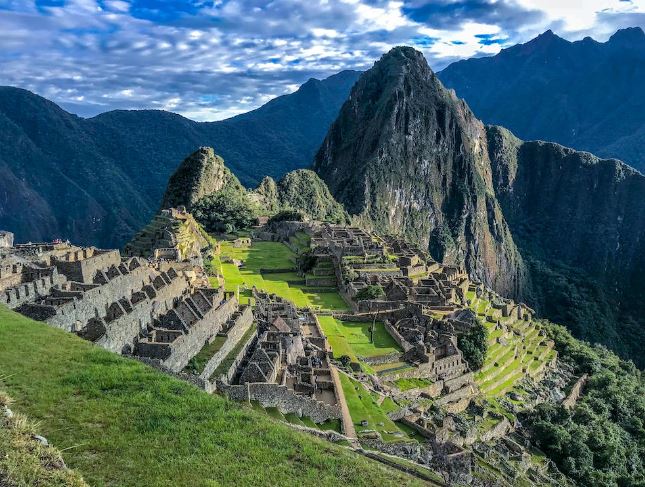
Puca Pucara
A small fortress or Tambo – a rest house for pilgrims heading into Cusco. Puca Pucara is an archeological site that is close to Cusco, Peru. The name “Puca Pucara” signifies “Red Fort” in Quechua, the language of the Inca progress. The site comprises a progression of stone designs and patios that are a way station for explorers on the Inca street framework.
Although the exact timeframe of Puca Pucara’s operation remains uncertain, historians believe that it was active during the Late Horizon period of the Inca Empire, which lasted approximately from 1450 to 1532 AD. Today, Puca Pucara is a well-known traveler spot. Tourists frequently visit it as part of a tour through the Sacred Valley and other Inca sites in the Cusco region.
Tambomachay
Tambomachay is an archeological site situated close to Cusco, Peru. The site is accepted to have been worked during the Inca time frame and is remembered to have been utilized as a royal retreat and spa. One of the most striking elements of Tambomachay is the complex stonework, which highlights smooth, cleaned surfaces and exact points and joints. The site is remembered to have been worked by the Inca human progress, which administered quite a bit of South America from the thirteenth to the sixteenth 100 years. Today, Tambomachay is a well-known traveler spot and is frequently visited as a feature of a visit through the Sacred Valley and other Inca destinations in the Cusco locale. The site offers an interesting look into the refined designing and building abilities of the Inca progress, as well as their appreciation for the regular magnificence and recuperating powers of water.
A series of Inca baths were to do with ritual bathing rather than washing, and this is an excellent example of the Inca’s fascination with water and their ability to direct it where they wanted. Three stone outlets channel the water, which is pure enough to drink.
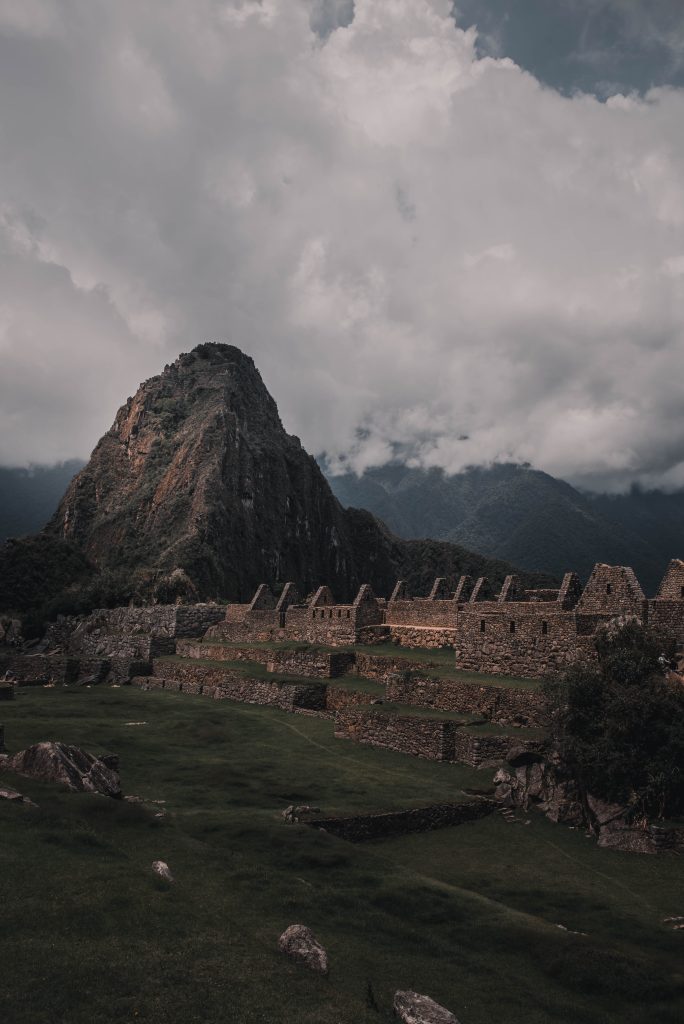
Inca sites within two hours of Cusco
Once you have explored the immediate vicinity of Cusco within a short drive there are many more beautiful Inca sites. Some are well known and much visited, whilst a little research will show you many more sites that very few people ever get to.
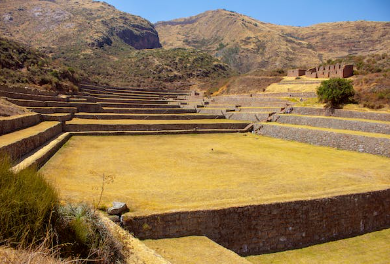
Tipón
This is an extensive Inca site 4km off the main road running to Sicuani from Cusco (21km from Cusco). They thought that this was an important site to dedicate to the veneration of water. It is extensive, with a series of stone-walled Andenes irrigated by a beautifully channeled stream of water, originating from a spring high on the mountainside. To the west of the terraces lie the remains of various buildings of typical Inca stonework, including an intihuatana. The terraces, similar to those at Moray, may have been some sort of agricultural experimentation center.
The Sacred Valley
An hour’s drive from Cusco brings you to the Sacred valley, the valley of the Urubamba river.
The Sacred Valley of Peru, otherwise called the Urubamba Valley, is a lovely and generally huge locale situated in the Andean high countries of Peru. The valley extends north of 60 kilometers from the town of Pisac to Ollantaytambo and stunning mountain ranges are around it.
Today, the Sacred Valley is a well-known destination for travelers visiting Peru. It offers many outside exercises, for example, climbing, mountain trekking, and wilderness boating, as well as any open doors to find out about the way of life and history of the district. Many people use the Sacred Valley as a starting point for their journey to the famous Inca ruins of Machu Picchu, you can reach by train from Ollantaytambo

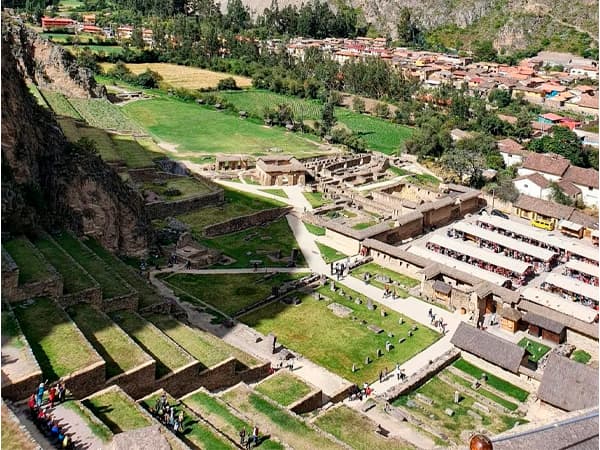
Ollantaytambo
For Inca admirers, the Sacred Valley and in particular the small town of Ollantaytambo is one of the best in Peru. The town still retains its Inca layout. Many houses have Inca doorways, windows, wall niches, and courtyards showing their Inca origins. Inca traditions are still very much alive here too. The focus of Ollantaytambo is the magnificent Inca fort and temple above the town. The Inca stonework here is of the highest quality. Guides consistently call attention to the Pedros cansadas (‘tired stones’) that the people cut however at that point deserted on the way from the quarry on the most distant side of the Urubamba stream. The Baño de Ñusta (Princess’ shower) and one can not miss the Sanctuary of the Condor.
Pumamarca
Pumamarca, otherwise famous as Panther Marka, is an Inca archeological site present in the Sacred Valley of Peru, close to the town of Ollantaytambo. The site is on a peak sitting above the valley.
The site likewise incorporates a few designs, including an enormous stately stage, a progression of small buildings for stockpiling or living quarters, and a system of channels and reservoir conduits that provided water to the porches and fields.
This site is more of an effort to reach, a two-hour walk up the hillside. The site is beautiful and a joy to look around. Its exact function remains something of a mystery, like so many Inca sites. Many think that Pumamarca was an Inca fortress, strategically located to control access to the Sacred Valley from Antisuyo, one of the four quarters of the empire.
Today, Pumamarca is a famous destination for sightseers keen on Inca history and culture. Travelers usually visit this site as a part of a visit through the Sacred Valley, which may likewise incorporate stops at other Inca locales like Machu Picchu and Pisac.
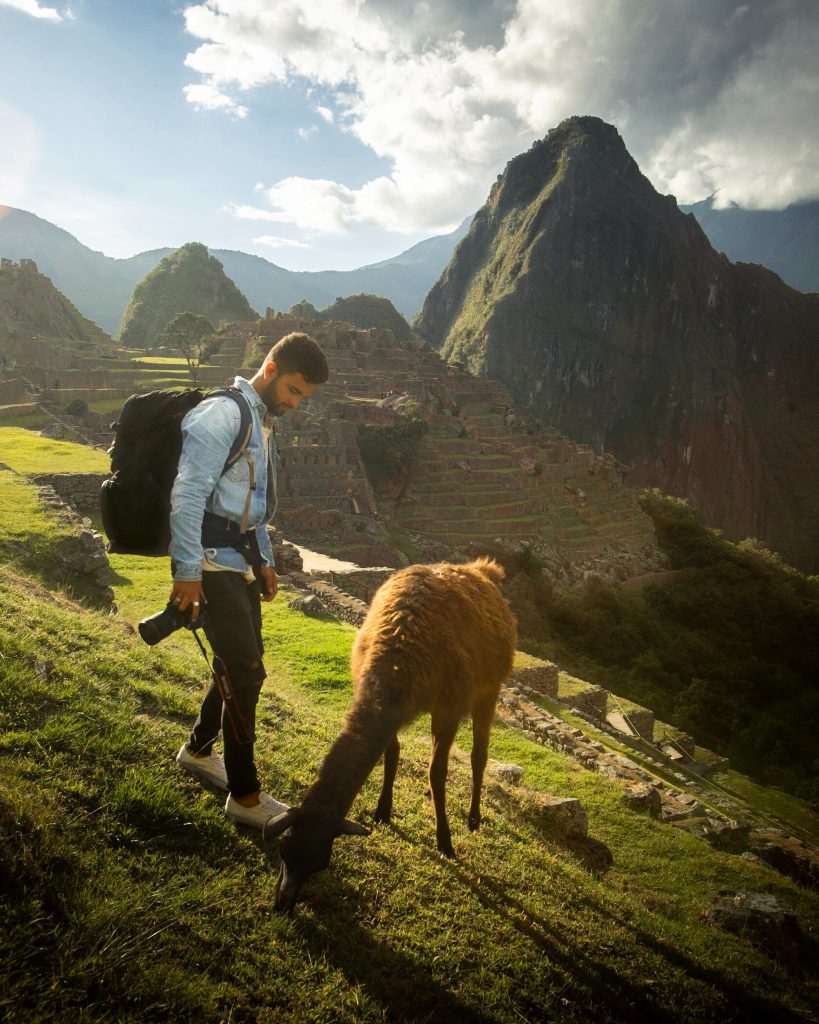
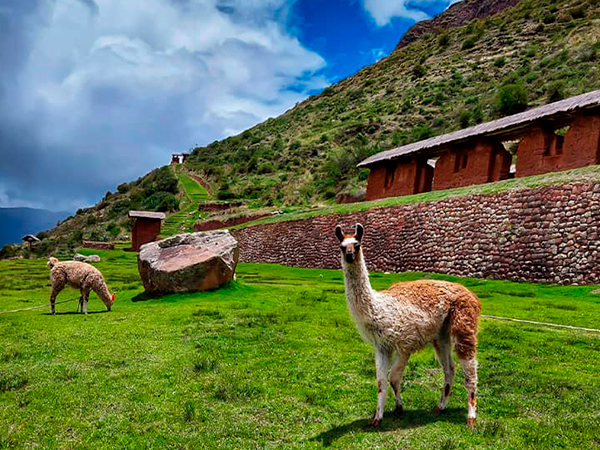
Huchuy Qosqo
A more rustic site, also in the Sacred valley. There are several hiking routes to get here, which we recommend. The views of the valley are spectacular. The site itself is extensive with buildings and terraces.
Huchuy Qosqo, otherwise famous as Little Cusco, is an Inca archeological site in the Sacred Valley of Peru, around 3.5 miles (6 kilometers) north of the town of Urubamba. Many used it during the reign of the Inca Ruler Viracocha in the fifteenth hundred years.
One of the most amazing highlights of Huchuy Qosqo is the all-encompassing perspectives it offers of the encompassing mountains and valleys. From the site, guests can see the snow-covered pinnacles of the Andes and the terraced rural fields of the Holy Valley.
Today, Huchuy Qosqo is a famous destination for travelers curious about Inca history and culture. Travelers frequently visit this site as a part of a multi-day journey across the mountains, which may likewise incorporate stops at other Inca destinations like Machu Picchu and Ollantaytambo.
Moray
Moray is an Incan archeological site present in the Sacred Valley of Peru, around 50 kilometers northwest of Cusco. The site is famous for its strange roundabout porches, which the Incas utilized for rural trial and error and exploration.
The terraces at Moray are in a progression of concentric circles. Along with the biggest patio estimated roughly 30 meters from top to bottom. Each porch is ringed by a stone wall and loaded up with soil and water, making a novel microclimate. It permitted the Incas to explore different avenues regarding developing harvests at various temperatures and heights.
An enigmatic site thought to be for agricultural purposes. It consists of concentric circular terraces lining four huge natural depressions in the landscape. The terraces divide into sectors and apparently experience different temperatures at each level.
Today, Moray is a famous destination for vacationers who are curious about Inca history and culture. The site is frequently visited as a component of a visit through the Sacred Valley. They may likewise incorporate stops at other Inca destinations like Machu Picchu and Ollantaytambo.
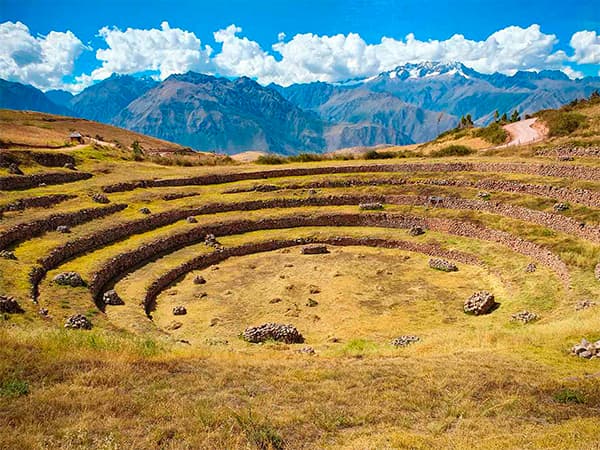
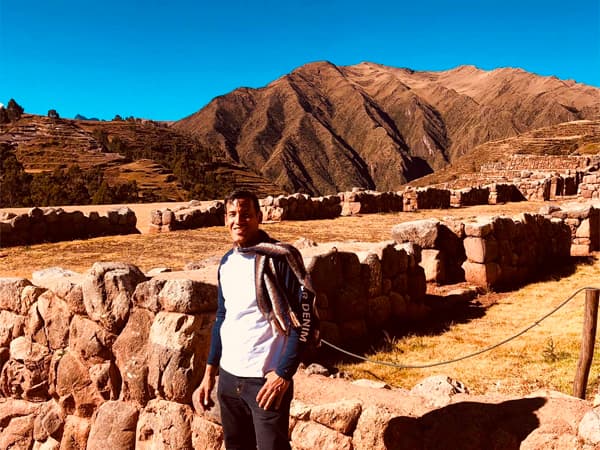
Choquecancha
Choquecancha is a little Andean town situated in the Cusco district of Peru, roughly 100 kilometers southeast of the city of Cusco. The town is arranged at a height of north of 3,600 meters and is known for its customary Andean culture and shocking mountain view.
Notwithstanding its social attractions, Choquecancha is encircled by stunning excellence, including snow-covered mountains, high glades, and flawless lakes and waterways. The town is likewise situated close to a few significant Inca archeological destinations, including Machu Picchu and the Consecrated Valley.
This site lies off the beaten track, near the town of Lares. It boasts a 14-niched Inca wall that lines the square of this small ancient village. A glance up the hillside reveals further neglected archaeological remains.
Today, Choquecancha is a well-known spot for sightseers keen on encountering the customary Andean culture and exploring the shocking regular landscape of the Cusco locale. Travelers can climb through the encompassing mountains, visit nearby networks, and take part in cultural activities like local dances and music exhibitions.
Inca sites a bit further afield
Within a few hours of Cusco lies the world-renowned Inca site of Machu Picchu.
Machu Picchu
Machu Picchu was never found by the Spanish conquerors so was generally flawless, however congested, when seen as in 1911 by Hiram Bingham. It is the gem in the crown of Inca locales and for certain value a visit. Machu Picchu can be reached via train or on any of the various Inca trails. The paths are an organization of Inca pathways and all components are brilliant, far-off Inca locales. Many are rest houses, or lesser sanctuaries, but all are interesting. On the Inca Trail, you will pass a few destinations: Llactapata, Sayacmarca, Phuyupatamarca, and, as far as I might be concerned, the most lovely of all, Huinay Huayna.
Choquequirao
This is a most noteworthy Inca site close to Machu Picchu, right across the mountains. This is a site you need to stroll to. It is an extreme two-day journey. The prize is definitely worth the work. This emphatically found the site, 1,700m over the thundering Apurimac stream, is far greater than Machu Picchu. Patios stretch all over the mountainside, and there’s a line of delightfully cut ceremonial showers and a focal court encompassed by fine stately, high-status private design. This site is as yet being cleared and hypotheses proliferate on its unique reason.
We have picked only a couple of the numerous Inca ruins in Peru. We focuss on the Cusco region as it were. There are a lot more and any of our Peru visits can be customized to specific interests.
The best opportunity to visit Peru on an Inca visit is from Spring to October, winter in the Andes. You can anticipate brilliant radiant days and cold crisp evenings.
To get the best out of your Inca visit to Peru we can prompt on Inca destinations to see, how to arrive, the territory, and the distances in question. Reach us at Andean Paths and we will assist you with arranging your Peru Inca visit.
